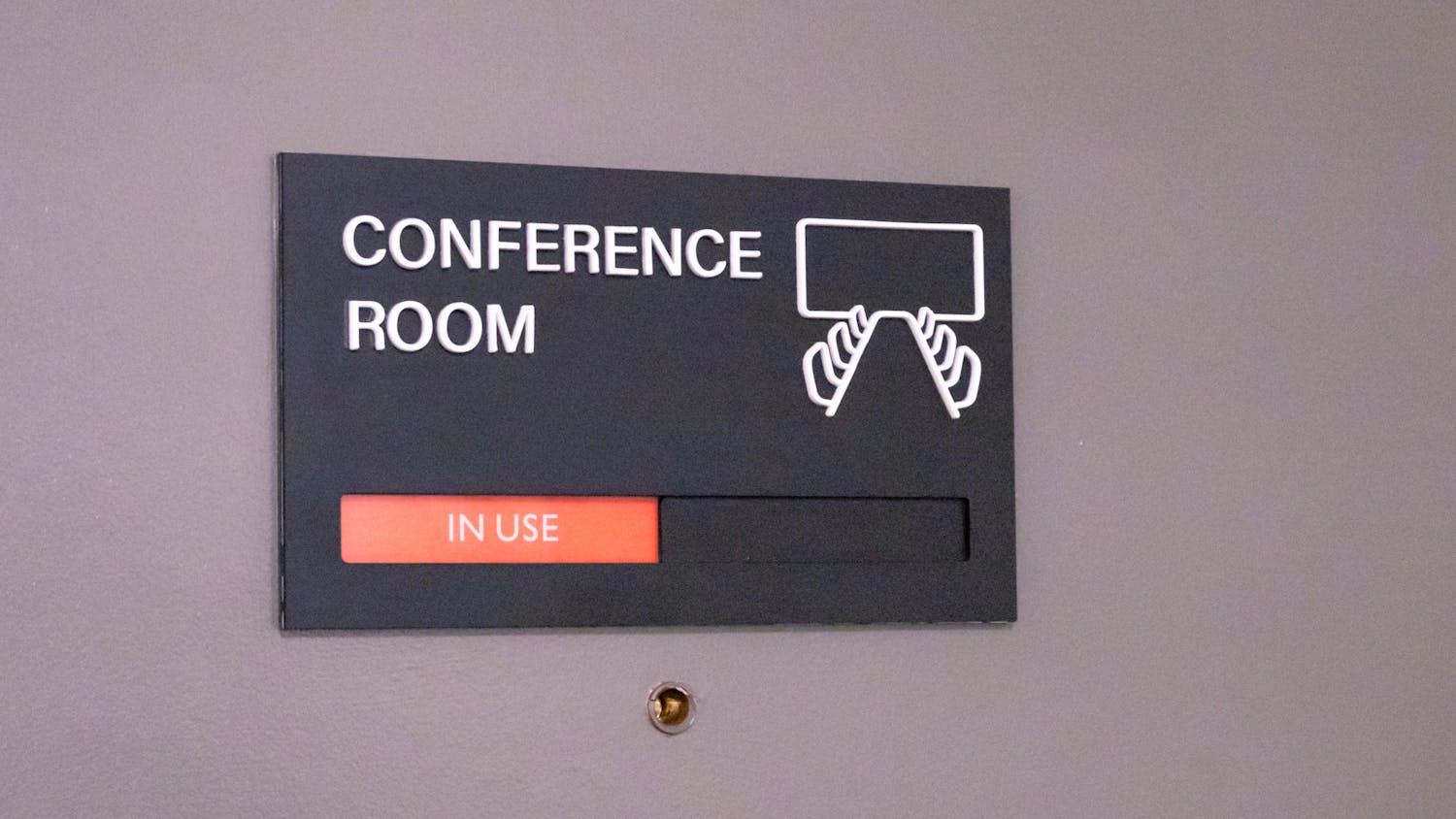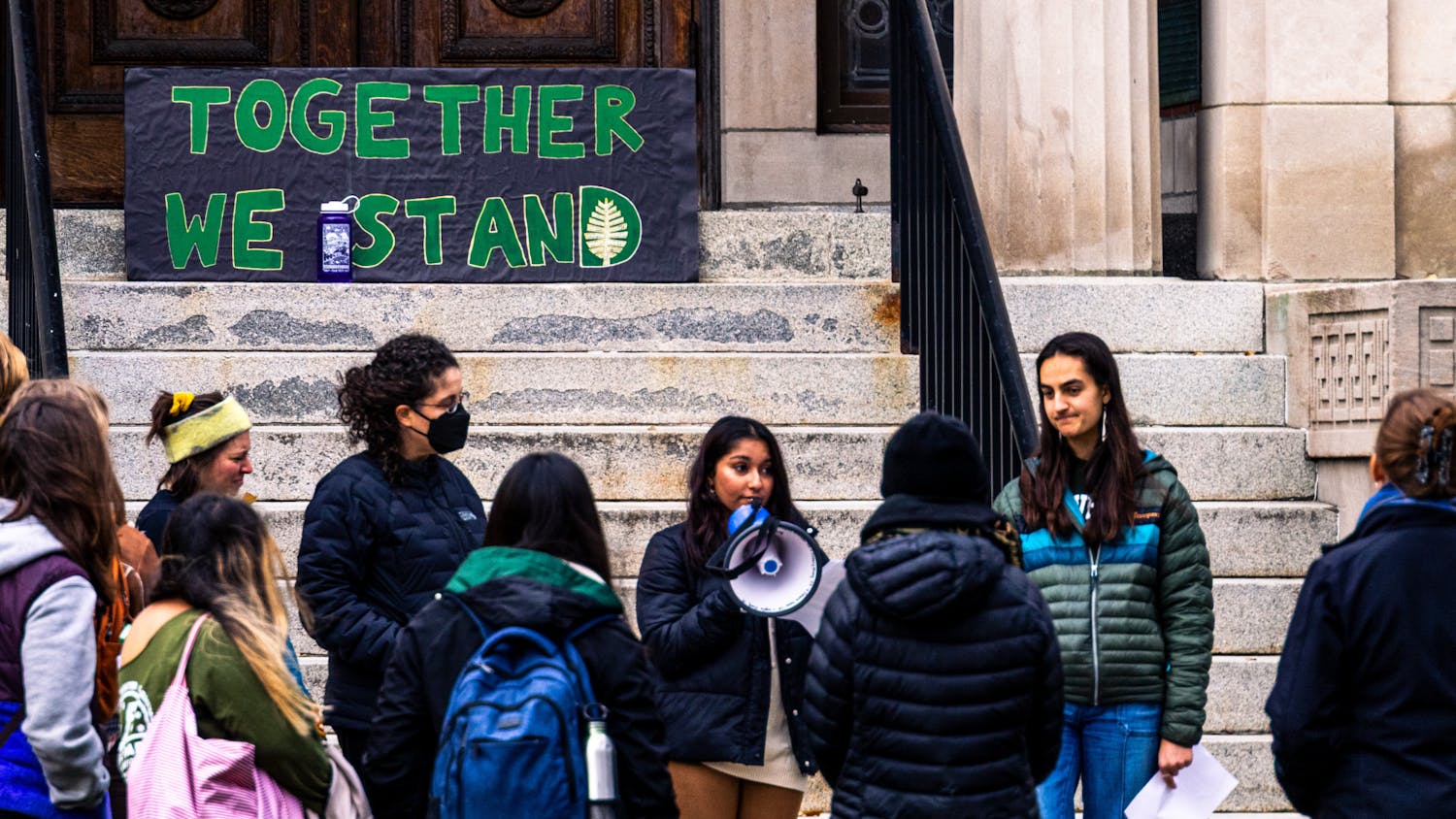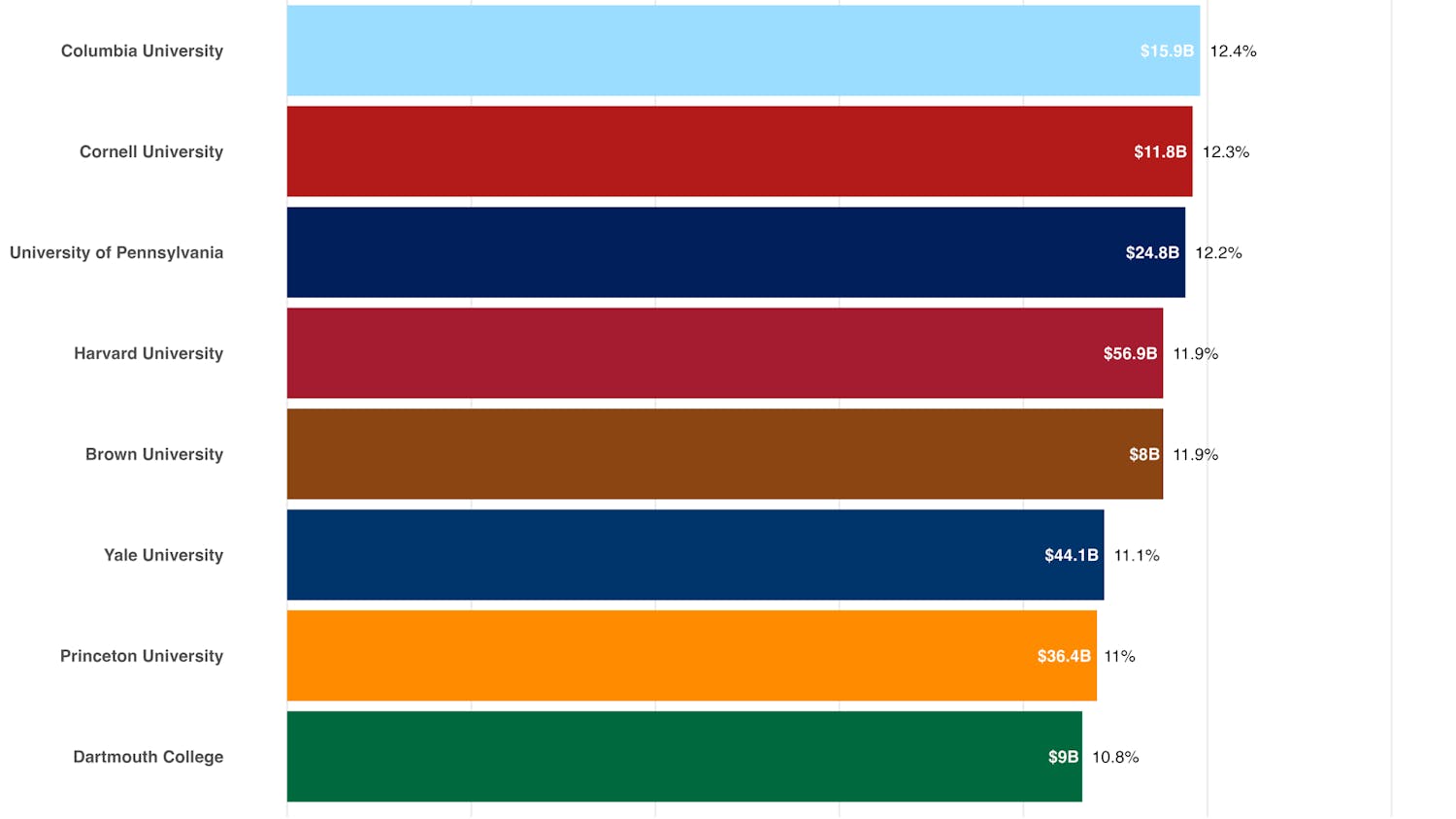At 120 years old, the Homecoming Bonfire is one of Dartmouth's oldest traditions --but bonfire committee chair Joe Cassidy warned that this year's Homecoming blaze could be the last of its kind.
"Students really need to take a little more ownership and responsibility for their actions," Cassidy said. "I think everybody's biggest fear is that if we can't somehow curb some of the dangerous behavior, the College gets into a tough decision about how to continue the tradition."
He emphasized that no one wants to do away with the bonfire -- an event that is closely linked with school spirit and unity, brings alumni back to campus and shines brightly on admissions brochures.
However, he and the other bonfire committee members reiterated that safety was a vital concern -- especially following last year's tragedy at Texas A&M when 12 students were killed while building their bonfire structure.
Cassidy and Class of 2004 President Frederica Ghesquiere told The Dartmouth that letters will be sent to Hinman Boxes of the entire student body within the next few days, explaining the possible end of the bonfire tradition.
"We are serious about this, very serious about this," Ghesquiere said. "The letter is trying to ensure that during the night of the bonfire, members of the Class of 2004 and the rest of the student body act in such a way that we can be sure to have a bonfire for future homecomings."
"We want to make sure it's a tradition that doesn't stop with our class," she continued. "We would be very ashamed of that."
She said in addition to the letter, she plans to send a BlitzMail message to classmates in the days leading up to the big weekend, "reminding them not to do anything stupid."
Last year saw an across-the-board increase of alcohol violations, arrests, vandalism and sexual assault over Homecoming weekend -- with many of the violations coming on the night of the bonfire. Many of the figures were double the numbers from the previous year's Homecoming.
According to Hanover Police Chief Nick Giaccone, "It does pose dangers. If people act responsibly, there is no danger, but it provides an opportunity for some to act out. Their behavior is detrimental not only to themselves but to others."
Cassidy said he and the bonfire committee analyzed everything from photographs to videotapes to police reports as they planned this year's blaze.
After reviewing the evidence, he said he and the other committee members are worried that "at some point, somebody's going to get hurt."
He emphasized that the majority of bonfire-goers aren't behaving inappropriately, but he said, "When you've got 8,000 or 10,000 people on the Green, it gets tough to identify who the few are who are the bad apples."
Especially in the aftermath of the disaster last year in Texas, the bonfire committee wants to make sure that the few "bad apples" don't injure themselves or do harm to other community members.
"We can tweak some things on the construction and the sweep, but it's really how the students behave that's a problem," Cassidy said. "I'm not sure what we can do to try to change the behavior. We feel a little bit helpless on that part of it."
For starters, Cassidy said he hopes the letter from student leaders to the community as well as the letter from Dean of the College James Larimore to the Class of 2004 will pressure students to act courteously and safely.
"Students really need to take a little more ownership and responsibility for their actions," he said.
He also said some of the changes this year will attempt to make the bonfire a safer one for the whole community. Some of this year's alterations come in response to the general awareness raised by the Texas tragedy and others result from Dartmouth's internal yearly review process conducted by the bonfire committee.
The only noticeable structural difference is that on the bottom level of the bonfire, there will be four by eight plywood sheets on each side of the fire. The plywood will start three feet up, so it will extend 12 feet up the bonfire structure.
Cassidy called the bonfire a "natural ladder," and recounted that in the past some students have tried to climb the lighted structure.
The sheets of plywood, he illustrated, "take away the rungs of the ladder."
He also said the sheets will create a "chimney effect" and enhance the probability that the structure will collapse in on itself as it burns -- as it is designed to do -- instead of collapsing to one side.
As far as Cassidy knows, the bonfire has never collapsed to the side in the past. However, he said if the wind blew strongly in one direction, such a fall could be possible, and the plywood will diminish risk of such a possibility.
According to Cassidy, this year will also bring construction lights to the Green the night of the bonfire as well as a marked off area that students should not enter while the fire is burning.
During Thursday's construction, a crane operated by a professional, will help first year students hoist the wood up the structure as they build, and as they work on the construction, closed-toed shoes will be required in addition to the traditional hard hats. Cassidy also said there will be more signs posted outside residence halls before the sweep to direct the sweepers.
Dean of Student Life Holly Sateia said she was confident that the bonfire preparations would lead to a well-orchestrated, enjoyable event.
"I'm optimistic with the committee's work, the hard work of the '04s, and the work of the campus leadership, that this event will be a wonderful event for the entire Dartmouth community," she said.
She emphasized that the College is not "looking to eliminate the bonfire" and said this year's changes -- though coming in light of the Texas tragedy -- are just part of the annual bonfire assessment and enhancement process.
"After last year's bonfire and after the incident at Texas A&M, it seems only responsible for us, like many other schools across the country with bonfires, to reexamine our procedures to make sure that it is safe," Sateia explained.
However, Cassidy explained that whereas Texas ran into problems with their construction, Dartmouth's bonfire building process is very safe and regulated.
In addition to the changes that the bonfire committee is implementing this year and its own internal review, the college is bringing in a private company with expertise on bonfires to assess the safety measures Dartmouth takes with its fire.
Cassidy compared the outside review to the College's reaccredidation process, saying it would provide a new view. Bonfire reviewers will likely be in attendance from Thursday when construction begins until the structure has been reduced to ashes Friday night.
Giaccone said he worries that without an "official sanctioned bonfire, there probably could be problems with bonfires being held elsewhere that don't have any of the safety features built in."
He said there have been no problems in the past with unsanctioned bonfires, but said the possible end to the bonfire tradition "would probably be a loss for the community."



